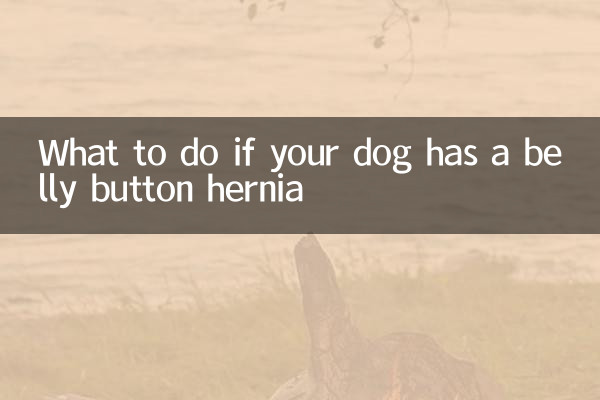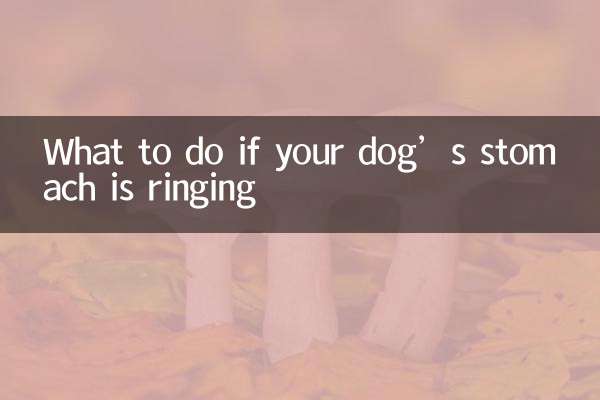What to do if your dog has a belly button hernia? Comprehensive analysis and response guide
Recently, pet health issues have become one of the hot topics, especially the discussion of dog belly button hernia has increased significantly. Many pet owners are worried about this and don't know how to respond. This article will focus on this hot topic, provide structured data and practical suggestions to help you scientifically deal with the problem of dog belly button hernia.
1. What is dog belly button hernia?

Belly button hernia is a common congenital defect in puppies that appears as a soft swelling in the belly button, usually caused by intra-abdominal organs (such as fat or intestines) protruding through an unclosed umbilical ring. The following is a comparison of common types and characteristics:
| type | feature | probability of occurrence |
|---|---|---|
| small hernia | If the diameter of the swelling is less than 1cm, it can be pushed back manually | About 65% of cases |
| medium hernia | The swelling is 1-2cm, which may be accompanied by slight discomfort. | About 25% of cases |
| Large/incarcerated hernia | Swelling >2cm, possible ischemic necrosis (emergency) | About 10% of cases |
2. Recent hot topics on the Internet
According to the data analysis of the entire network in the past 10 days, the three major issues that pet owners are most concerned about are as follows:
| Ranking | hotly discussed issues | Proportion of discussion volume |
|---|---|---|
| 1 | Is immediate surgery required? | 42% |
| 2 | Home Care Considerations | 35% |
| 3 | Postoperative recovery period | twenty three% |
3. Specific response plans
1. Diagnosis and medical advice
If you find a swelling in your dog’s belly button, you need to follow the following procedures:
| Step 1 | Record the size of the swelling and the frequency of color changes |
| Step 2 | Check for pain and fever (>39°C requires emergency treatment) |
| Step 3 | Small hernias can be observed for 2-4 weeks, during which strenuous exercise should be avoided |
2. Reference standards for surgical decision-making
| index | suggestion |
|---|---|
| Age <6 months | Prioritize observation, 50% chance of self-healing |
| The swelling continues to increase | Recommend surgery within 3 weeks |
| Vomiting/refusal to feed | Emergency surgery required within 24 hours |
3. Key points of postoperative care
According to veterinarian feedback data, attention should be paid to the following during the recovery period:
| wound protection | Wear the Elizabethan band for at least 14 days |
| diet modification | Feed liquid food for 3 days after surgery |
| Follow-up time | Remove sutures on the 7th day and review on the 30th day |
4. Preventive measures and common misunderstandings
TOP3 misconceptions:
| Myth 1 | Firm massage can eliminate hernia (may aggravate the condition) |
| Myth 2 | All hernias require surgery (small hernias may heal on their own) |
| Myth 3 | Calcium supplementation can treat hernia (not directly related) |
5. Cost reference (latest data in 2024)
| project | price range |
|---|---|
| basic check | 80-200 yuan |
| routine surgery | 800-1500 yuan |
| Emergency incarcerated hernia surgery | 2000-5000 yuan |
Warm reminder: If you find that your dog has hernia symptoms, it is recommended to take photos and record them first and conduct an online consultation through a professional pet medical APP (such as Pet Doctor Cloud, Awen Pet, etc.) to obtain a preliminary assessment before deciding on the follow-up treatment plan. Regular physical examinations for your dog can effectively prevent the occurrence of serious complications.

check the details

check the details